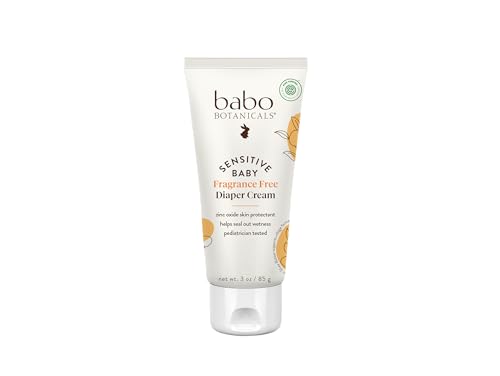
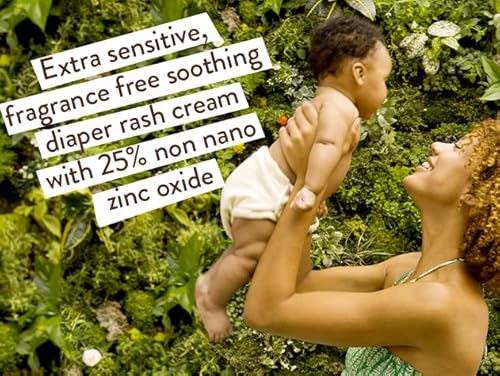
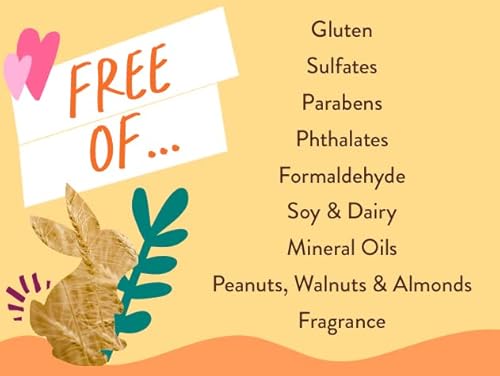
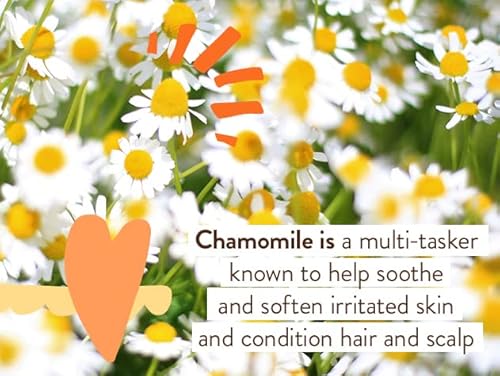
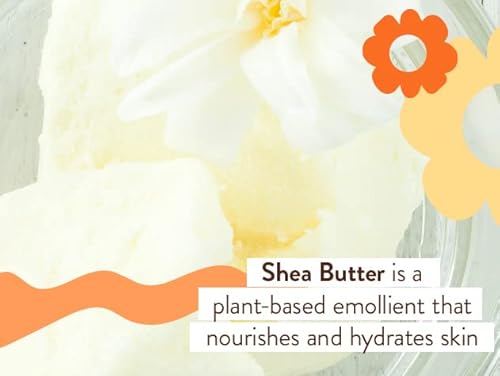
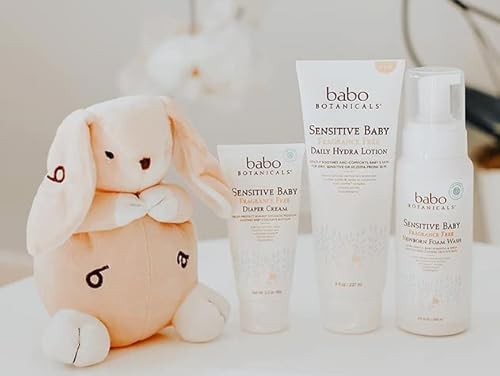
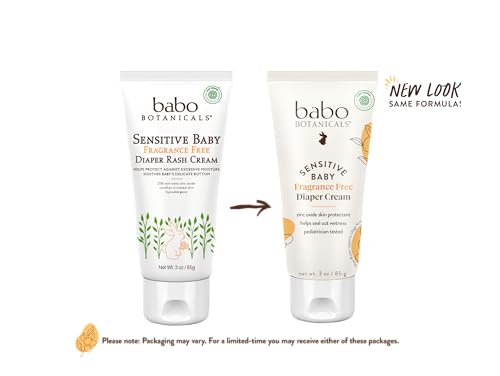
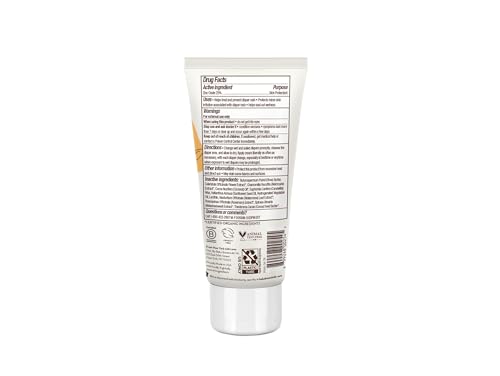
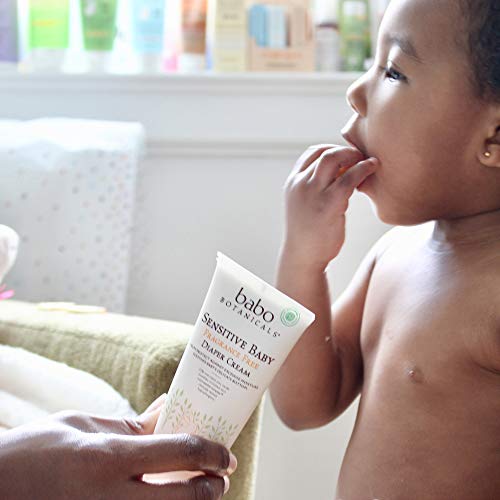
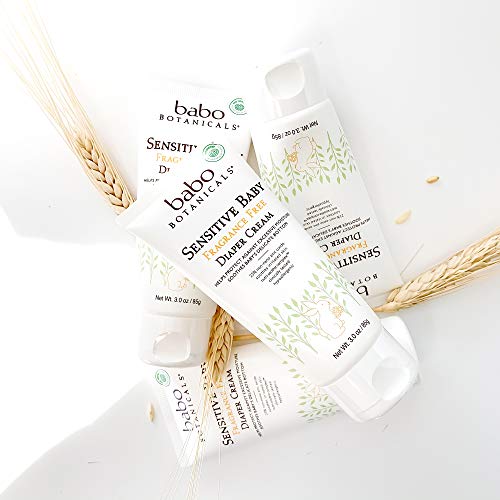

Babo Botanicals Diaper Cream - Soothing 25% Zinc Oxide, Calendula & Shea - EWG Verified - 3oz


Lecithin
Medium RiskLecithin is a naturally occurring lipid found in various plant and animal tissues, primarily composed of phospholipids. It serves as an emulsifier, stabilizing mixtures of oil and water, and is commonly used in food, cosmetics, and pharmaceuticals to improve texture and extend shelf life.
Sustai Insights
Lecithin provides functional benefits as an effective emulsifier and stabilizer, enhancing product texture while being sustainably sourced from natural origins. Health risks are generally low, with moderate concerns regarding allergies and immunotoxicity but minimal cancer or reproductive toxicity risks. Environmental hazards are limited, and it is not classified as a pollutant. Regulatory bodies impose few restrictions. Overall, lecithin presents a medium risk, suggesting caution in usage, especially for sensitive individuals. Alternatives include sunflower lecithin or other plant-based emulsifiers that may offer similar benefits with reduced allergenic potential.
Rosmarinus Officinalis (Rosemary) Leaf Extract
Medium RiskRosemary leaf extract is produced from the leaves of the Rosmarinus officinalis plant. It is commonly used in cosmetic formulations for its potential antioxidant properties and fragrance. The extract may also contribute to the preservation of products due to its antimicrobial characteristics.
Sustai Insights
Rosemary leaf extract offers functional benefits such as antioxidant and antimicrobial properties, which can enhance product stability and shelf-life. It is generally considered low risk for carcinogenicity and reproductive toxicity, but it carries a moderate potential for allergic reactions. Environmentally, it poses low risk with no significant pollutant or bioaccumulation concerns. Regulatory bodies have not placed significant restrictions on its use, although some verified products cannot contain certain concentrations. Overall, the ingredient's risk level is medium, necessitating careful usage practices to mitigate allergic responses.
Theobroma Cacao (Cocoa) Seed Butter
Low RiskTheobroma cacao (cocoa) seed butter is extracted from the roasted seeds of the cocoa plant. It is commonly used in cosmetics and skincare products for its emollient properties, helping to moisturize and soften the skin. Cocoa butter is also known for its stability and resistance to rancidity.
Sustai Insights
Cocoa butter is recognized for its effective moisturizing properties and is sustainably sourced, contributing to its appeal in personal care products. It poses low health risks, with minimal concerns regarding carcinogenicity, allergies, or reproductive toxicity. Environmentally, it does not significantly contribute to pollution or bioaccumulation. Regulatory bodies impose few restrictions, affirming its safety. Overall, the risk associated with cocoa seed butter is low, making it a favorable ingredient in cosmetics. Alternatives include shea butter or plant oils for similar emollient benefits.
Hydrogenated Vegetable Oil
Low RiskHydrogenated vegetable oil is an ingredient produced by the hydrogenation of vegetable oils, which transforms liquid oils into a more solid form. It is commonly used in cosmetic formulations as an emollient, providing a smooth texture and improving the stability of products.
Sustai Insights
Hydrogenated vegetable oil functions effectively as an emollient, enhancing product texture and stability. It is generally recognized as safe, with low concerns regarding carcinogenicity, allergies, and reproductive toxicity. Environmental risks are minimal, with no significant pollutant potential or bioaccumulation noted. Regulatory agencies have not issued warnings against its use. Overall, the ingredient presents a low risk, making it a suitable choice in cosmetic formulations.
Nasturtium Officinale (Watercress) Extract
Low RiskNasturtium officinale extract is derived from the watercress plant, commonly used in skincare and cosmetic products for its potential antioxidant properties. It is included for its ability to provide moisture and support skin health.
Sustai Insights
Nasturtium officinale extract offers functional benefits such as hydration and antioxidant support, and is often sustainably sourced. Health risks are minimal, with low concerns regarding carcinogenicity, allergenic potential, and reproductive toxicity. Environmental risks are also low, as the ingredient is not associated with significant pollution or bioaccumulation. Regulatory status indicates no current restrictions. Overall, this ingredient presents a low risk profile for consumer safety and environmental impact, making it a viable option in various formulations.
Chamomilla Recutita (Matricaria) Flower Extract
Low RiskChamomilla recutita (Matricaria) flower extract is derived from the flower of the chamomile plant. It is commonly used in cosmetic products for its soothing properties and as an anti-inflammatory agent. This extract is valued for its potential to calm skin irritations and enhance overall skin appearance.
Sustai Insights
Chamomilla recutita (Matricaria) flower extract is recognized for its soothing and anti-inflammatory benefits, making it effective in skincare formulations. It is sustainably sourced and not associated with significant health risks, such as carcinogenicity or allergenic potential, resulting in a low-risk profile. Environmental concerns are minimal as it does not contribute significantly to pollution. Regulatory bodies impose few restrictions on its use, further supporting its safety. However, users should practice standard safety measures, particularly if they have known sensitivities. Overall, it is a low-risk ingredient with favorable attributes.
Euphorbia Cerifera (Candelilla) Wax
Low RiskCandelilla wax is extracted from Euphorbia cerifera, a shrub native to northern Mexico and the southwestern United States. It is primarily used as a thickening agent, emollient, and film-forming agent in cosmetic and personal care products.
Sustai Insights
Candelilla wax serves effectively as a natural thickener and emollient, contributing to product texture and moisture retention. It is biodegradable and sourced sustainably, supporting eco-friendly formulations. Health risks are low, with minimal concerns about sensitization. Environmental hazards are also low, with no significant pollutant or bioaccumulation potential noted. Regulatory bodies impose few restrictions, indicating overall low risk. Safe usage practices should be followed, and alternatives like carnauba wax may be considered for those seeking different plant-based options.
Zinc Oxide
Low RiskZinc oxide is an inorganic oxide used as a colorant, UV filter, and skin protectant in various cosmetic and personal care products. It functions effectively in sunscreens and ointments, providing a barrier against harmful UV radiation and aiding in skin healing processes.
Sustai Insights
Zinc oxide offers effective UV protection and skin healing properties, making it a valuable ingredient in sunscreens and protective creams. It is generally recognized as safe, with low concerns for carcinogenicity and developmental toxicity. However, it has moderate persistence and bioaccumulation potential and may pose low to moderate allergy risks. Regulatory guidelines restrict its concentration in certain products, emphasizing safe use. Overall, zinc oxide is assessed as low risk, and alternatives like titanium dioxide may be considered for similar applications.
Spiraea Ulmaria (Meadowsweet) Flower Extract
Low RiskSpiraea ulmaria (meadowsweet) flower extract is derived from the flowers of the Spiraea ulmaria plant. It is commonly used in cosmetic formulations for its soothing properties and is known for its role in skin care as an anti-inflammatory and astringent agent.
Sustai Insights
Meadowsweet flower extract offers functional benefits such as anti-inflammatory and astringent properties, making it useful in soothing skin formulations. It is sustainably sourced and generally recognized as safe, with low concerns regarding carcinogenicity, allergies, and reproductive toxicity. Environmental risks are minimal, as it does not contribute significantly to pollution or bioaccumulation. Regulatory bodies do not impose restrictions on its use. Overall, the ingredient presents a low risk profile, making it a viable choice in cosmetic products.
Calendula Officinalis (Pot Marigold) Flower Extract
Low RiskExtract of the Calendula (Calendula officinalis) flower, commonly known as pot marigold, is utilized in cosmetic formulations for its soothing and anti-inflammatory properties. It is often included in creams, lotions, and ointments to promote skin health and healing.
Sustai Insights
Calendula officinalis flower extract offers functional benefits such as skin soothing and anti-inflammatory effects, making it valuable in topical applications. It is considered low risk for health impacts, with minimal concerns regarding carcinogenicity, allergies, or reproductive toxicity. Environmentally, it presents low pollution potential and is not bioaccumulative. Regulatory bodies have not imposed significant restrictions. Safe usage practices should be followed, and while alternatives exist, this extract is generally regarded as a low-risk option for cosmetic use.
Cocos Nucifera (Coconut) Oil
Low RiskCocos Nucifera (Coconut) Oil is derived from the kernels of the coconut palm. It is primarily used in cosmetic formulations for its emollient and moisturizing properties, making it suitable for skin and hair care products.
Sustai Insights
Coconut oil serves as an effective moisturizer and emollient, promoting skin hydration and softness. It is sustainably sourced and biodegradable. Health risks are minimal, with low concerns regarding carcinogenicity, allergens, and reproductive toxicity. Environmental impact is also low, as it does not contribute significantly to pollution or bioaccumulation. Regulatory bodies have not issued restrictions on its use. Overall, coconut oil presents a low risk for health and environmental concerns, making it a safe ingredient in cosmetic products.
Butyrospermum Parkii (Shea) Butter
Low RiskButyrospermum parkii (shea) butter is a vegetable fat derived from the nuts of the shea tree. It is commonly used in cosmetic formulations for its emollient properties, providing moisture and improving skin texture. Additionally, shea butter is known for its ability to enhance the stability of products and deliver a creamy texture.
Sustai Insights
Shea butter offers functional benefits as an effective moisturizer, enhancing skin barrier function and texture. It is sustainably sourced and biodegradable, contributing to eco-friendliness. Health-wise, it is associated with low risks for carcinogenicity, allergies, and reproductive toxicity. Environmental impacts are minimal, with no significant pollutant potential identified. Regulatory assessments indicate no current restrictions. Overall, the ingredient presents a low risk, making it a favorable choice in cosmetic formulations.
Helianthus Annuus (Sunflower) Seed Oil
Low RiskHelianthus annuus (sunflower) seed oil is derived from the seeds of the sunflower plant. It serves primarily as an emollient and moisturizer in cosmetic formulations, helping to maintain skin hydration and improve texture.
Sustai Insights
Sunflower seed oil is effective as an emollient, providing moisture and improving skin texture while being biodegradable and sustainably sourced. It poses low health risks, including negligible concerns for carcinogenicity, allergies, or reproductive toxicity. Environmentally, it does not significantly contribute to pollution or bioaccumulation. Regulatory bodies currently do not list any advisories for this ingredient. Overall, it is assessed as low risk, with safe usage practices recommended. Alternatives include oils like jojoba or almond oil for those seeking different properties.
Theobroma Cacao (Cocoa) Seed Butter
Low RiskTheobroma cacao (cocoa) seed butter is extracted from the roasted seeds of the cocoa plant. It is commonly used in cosmetics and skincare products for its emollient properties, helping to moisturize and soften the skin. Cocoa butter is also known for its stability and resistance to rancidity.
Sustai Insights
Cocoa butter is recognized for its effective moisturizing properties and is sustainably sourced, contributing to its appeal in personal care products. It poses low health risks, with minimal concerns regarding carcinogenicity, allergies, or reproductive toxicity. Environmentally, it does not significantly contribute to pollution or bioaccumulation. Regulatory bodies impose few restrictions, affirming its safety. Overall, the risk associated with cocoa seed butter is low, making it a favorable ingredient in cosmetics. Alternatives include shea butter or plant oils for similar emollient benefits.
Lecithin
Medium RiskLecithin is a naturally occurring lipid found in various plant and animal tissues, primarily composed of phospholipids. It serves as an emulsifier, stabilizing mixtures of oil and water, and is commonly used in food, cosmetics, and pharmaceuticals to improve texture and extend shelf life.
Sustai Insights
Lecithin provides functional benefits as an effective emulsifier and stabilizer, enhancing product texture while being sustainably sourced from natural origins. Health risks are generally low, with moderate concerns regarding allergies and immunotoxicity but minimal cancer or reproductive toxicity risks. Environmental hazards are limited, and it is not classified as a pollutant. Regulatory bodies impose few restrictions. Overall, lecithin presents a medium risk, suggesting caution in usage, especially for sensitive individuals. Alternatives include sunflower lecithin or other plant-based emulsifiers that may offer similar benefits with reduced allergenic potential.
Hydrogenated Vegetable Oil
Low RiskHydrogenated vegetable oil is an ingredient produced by the hydrogenation of vegetable oils, which transforms liquid oils into a more solid form. It is commonly used in cosmetic formulations as an emollient, providing a smooth texture and improving the stability of products.
Sustai Insights
Hydrogenated vegetable oil functions effectively as an emollient, enhancing product texture and stability. It is generally recognized as safe, with low concerns regarding carcinogenicity, allergies, and reproductive toxicity. Environmental risks are minimal, with no significant pollutant potential or bioaccumulation noted. Regulatory agencies have not issued warnings against its use. Overall, the ingredient presents a low risk, making it a suitable choice in cosmetic formulations.
Rosmarinus Officinalis (Rosemary) Leaf Extract
Medium RiskRosemary leaf extract is produced from the leaves of the Rosmarinus officinalis plant. It is commonly used in cosmetic formulations for its potential antioxidant properties and fragrance. The extract may also contribute to the preservation of products due to its antimicrobial characteristics.
Sustai Insights
Rosemary leaf extract offers functional benefits such as antioxidant and antimicrobial properties, which can enhance product stability and shelf-life. It is generally considered low risk for carcinogenicity and reproductive toxicity, but it carries a moderate potential for allergic reactions. Environmentally, it poses low risk with no significant pollutant or bioaccumulation concerns. Regulatory bodies have not placed significant restrictions on its use, although some verified products cannot contain certain concentrations. Overall, the ingredient's risk level is medium, necessitating careful usage practices to mitigate allergic responses.
Nasturtium Officinale (Watercress) Extract
Low RiskNasturtium officinale extract is derived from the watercress plant, commonly used in skincare and cosmetic products for its potential antioxidant properties. It is included for its ability to provide moisture and support skin health.
Sustai Insights
Nasturtium officinale extract offers functional benefits such as hydration and antioxidant support, and is often sustainably sourced. Health risks are minimal, with low concerns regarding carcinogenicity, allergenic potential, and reproductive toxicity. Environmental risks are also low, as the ingredient is not associated with significant pollution or bioaccumulation. Regulatory status indicates no current restrictions. Overall, this ingredient presents a low risk profile for consumer safety and environmental impact, making it a viable option in various formulations.
Chamomilla Recutita (Matricaria) Flower Extract
Low RiskChamomilla recutita (Matricaria) flower extract is derived from the flower of the chamomile plant. It is commonly used in cosmetic products for its soothing properties and as an anti-inflammatory agent. This extract is valued for its potential to calm skin irritations and enhance overall skin appearance.
Sustai Insights
Chamomilla recutita (Matricaria) flower extract is recognized for its soothing and anti-inflammatory benefits, making it effective in skincare formulations. It is sustainably sourced and not associated with significant health risks, such as carcinogenicity or allergenic potential, resulting in a low-risk profile. Environmental concerns are minimal as it does not contribute significantly to pollution. Regulatory bodies impose few restrictions on its use, further supporting its safety. However, users should practice standard safety measures, particularly if they have known sensitivities. Overall, it is a low-risk ingredient with favorable attributes.
Euphorbia Cerifera (Candelilla) Wax
Low RiskCandelilla wax is extracted from Euphorbia cerifera, a shrub native to northern Mexico and the southwestern United States. It is primarily used as a thickening agent, emollient, and film-forming agent in cosmetic and personal care products.
Sustai Insights
Candelilla wax serves effectively as a natural thickener and emollient, contributing to product texture and moisture retention. It is biodegradable and sourced sustainably, supporting eco-friendly formulations. Health risks are low, with minimal concerns about sensitization. Environmental hazards are also low, with no significant pollutant or bioaccumulation potential noted. Regulatory bodies impose few restrictions, indicating overall low risk. Safe usage practices should be followed, and alternatives like carnauba wax may be considered for those seeking different plant-based options.
Zinc Oxide
Low RiskZinc oxide is an inorganic oxide used as a colorant, UV filter, and skin protectant in various cosmetic and personal care products. It functions effectively in sunscreens and ointments, providing a barrier against harmful UV radiation and aiding in skin healing processes.
Sustai Insights
Zinc oxide offers effective UV protection and skin healing properties, making it a valuable ingredient in sunscreens and protective creams. It is generally recognized as safe, with low concerns for carcinogenicity and developmental toxicity. However, it has moderate persistence and bioaccumulation potential and may pose low to moderate allergy risks. Regulatory guidelines restrict its concentration in certain products, emphasizing safe use. Overall, zinc oxide is assessed as low risk, and alternatives like titanium dioxide may be considered for similar applications.
Spiraea Ulmaria (Meadowsweet) Flower Extract
Low RiskSpiraea ulmaria (meadowsweet) flower extract is derived from the flowers of the Spiraea ulmaria plant. It is commonly used in cosmetic formulations for its soothing properties and is known for its role in skin care as an anti-inflammatory and astringent agent.
Sustai Insights
Meadowsweet flower extract offers functional benefits such as anti-inflammatory and astringent properties, making it useful in soothing skin formulations. It is sustainably sourced and generally recognized as safe, with low concerns regarding carcinogenicity, allergies, and reproductive toxicity. Environmental risks are minimal, as it does not contribute significantly to pollution or bioaccumulation. Regulatory bodies do not impose restrictions on its use. Overall, the ingredient presents a low risk profile, making it a viable choice in cosmetic products.
Calendula Officinalis (Pot Marigold) Flower Extract
Low RiskExtract of the Calendula (Calendula officinalis) flower, commonly known as pot marigold, is utilized in cosmetic formulations for its soothing and anti-inflammatory properties. It is often included in creams, lotions, and ointments to promote skin health and healing.
Sustai Insights
Calendula officinalis flower extract offers functional benefits such as skin soothing and anti-inflammatory effects, making it valuable in topical applications. It is considered low risk for health impacts, with minimal concerns regarding carcinogenicity, allergies, or reproductive toxicity. Environmentally, it presents low pollution potential and is not bioaccumulative. Regulatory bodies have not imposed significant restrictions. Safe usage practices should be followed, and while alternatives exist, this extract is generally regarded as a low-risk option for cosmetic use.
Cocos Nucifera (Coconut) Oil
Low RiskCocos Nucifera (Coconut) Oil is derived from the kernels of the coconut palm. It is primarily used in cosmetic formulations for its emollient and moisturizing properties, making it suitable for skin and hair care products.
Sustai Insights
Coconut oil serves as an effective moisturizer and emollient, promoting skin hydration and softness. It is sustainably sourced and biodegradable. Health risks are minimal, with low concerns regarding carcinogenicity, allergens, and reproductive toxicity. Environmental impact is also low, as it does not contribute significantly to pollution or bioaccumulation. Regulatory bodies have not issued restrictions on its use. Overall, coconut oil presents a low risk for health and environmental concerns, making it a safe ingredient in cosmetic products.
Butyrospermum Parkii (Shea) Butter
Low RiskButyrospermum parkii (shea) butter is a vegetable fat derived from the nuts of the shea tree. It is commonly used in cosmetic formulations for its emollient properties, providing moisture and improving skin texture. Additionally, shea butter is known for its ability to enhance the stability of products and deliver a creamy texture.
Sustai Insights
Shea butter offers functional benefits as an effective moisturizer, enhancing skin barrier function and texture. It is sustainably sourced and biodegradable, contributing to eco-friendliness. Health-wise, it is associated with low risks for carcinogenicity, allergies, and reproductive toxicity. Environmental impacts are minimal, with no significant pollutant potential identified. Regulatory assessments indicate no current restrictions. Overall, the ingredient presents a low risk, making it a favorable choice in cosmetic formulations.
Helianthus Annuus (Sunflower) Seed Oil
Low RiskHelianthus annuus (sunflower) seed oil is derived from the seeds of the sunflower plant. It serves primarily as an emollient and moisturizer in cosmetic formulations, helping to maintain skin hydration and improve texture.
Sustai Insights
Sunflower seed oil is effective as an emollient, providing moisture and improving skin texture while being biodegradable and sustainably sourced. It poses low health risks, including negligible concerns for carcinogenicity, allergies, or reproductive toxicity. Environmentally, it does not significantly contribute to pollution or bioaccumulation. Regulatory bodies currently do not list any advisories for this ingredient. Overall, it is assessed as low risk, with safe usage practices recommended. Alternatives include oils like jojoba or almond oil for those seeking different properties.
Discover the Babo Botanicals Sensitive Baby Fragrance-Free Diaper Cream, specially crafted for your baby's delicate skin. This soothing cream combines 25% natural zinc oxide with nourishing calendula, shea, and cocoa butter, ensuring effective protection against diaper rash while being gentle and hypoallergenic.
- Soothing Protection: Provides a moisture barrier that alleviates and prevents diaper rash, keeping your baby's skin soft and irritation-free.
- Sensitive Skin Formula: Enriched with colloidal oatmeal to calm irritation, making it ideal for newborns with very sensitive skin.
- Organic Ingredients: Crafted from plant-based, vegan ingredients, including shea and cocoa butter, to nourish and soothe.
- EWG Verified: Rated #1 in safety by the EWG, ensuring no harsh chemicals or irritants, gluten, soy, or dairy are included.
- Daily Use Friendly: Safe for every diaper change, this cream is cloth diaper-friendly and maintains a protective barrier for your baby’s skin.
Subscribe & Save with Sustai
- Best Price Guarantee: Always enjoy the lowest prices on sustainable home essentials.
- No Surprises: We’ll notify you before shipping. No hidden fees, ever.
- You’re in Charge: Change, pause, or cancel your subscription anytime with ease.
- Eco-Friendly Deliveries: Our grouped shipments mean less packaging and lower emissions.
Join us on a sustainable journey. Special offers for a limited time! Prices and promotions may change.
Recommended Products
Discover the Babo Botanicals Sensitive Baby Fragrance-Free Diaper Cream, specially crafted for your baby's delicate skin. This soothing cream combines 25% natural zinc oxide with nourishing calendula, shea, and cocoa butter, ensuring effective protection against diaper rash while being gentle and hypoallergenic.
- Soothing Protection: Provides a moisture barrier that alleviates and prevents diaper rash, keeping your baby's skin soft and irritation-free.
- Sensitive Skin Formula: Enriched with colloidal oatmeal to calm irritation, making it ideal for newborns with very sensitive skin.
- Organic Ingredients: Crafted from plant-based, vegan ingredients, including shea and cocoa butter, to nourish and soothe.
- EWG Verified: Rated #1 in safety by the EWG, ensuring no harsh chemicals or irritants, gluten, soy, or dairy are included.
- Daily Use Friendly: Safe for every diaper change, this cream is cloth diaper-friendly and maintains a protective barrier for your baby’s skin.

You can have at most 2 Sustainable Steals products in your cart
Customer Reviews
Customers’ View
Customers appreciate the effectiveness and eco-friendly nature of Babo Botanicals Diaper Cream, particularly praising its gentle and safe formulation for sensitive skin. Many users highlight the product's natural ingredients, such as colloidal oatmeal, Shea, and Cocoa Butter, which provide soothing relief and nourishment. As one user noted, 'A little goes a long way!' indicating its efficiency in treating minor rashes. Additionally, customers value that it is EWG Verified, ensuring it is free from harmful chemicals. While some have mentioned challenges with the packaging, the overall sentiment reflects satisfaction with its performance and commitment to non-toxic, environmentally conscious care for babies. Overall, customers find this product effective and aligned with their sustainable lifestyle.
AI-generated from the text of customer reviewsThis product has no reviews yet.






